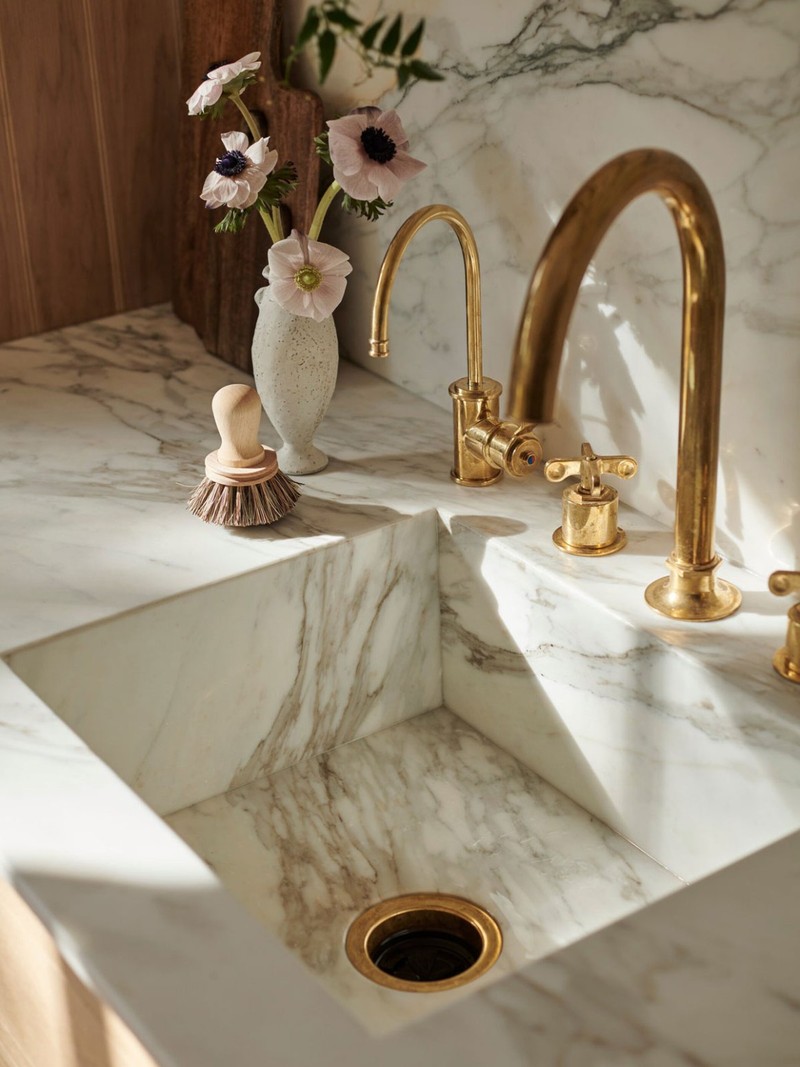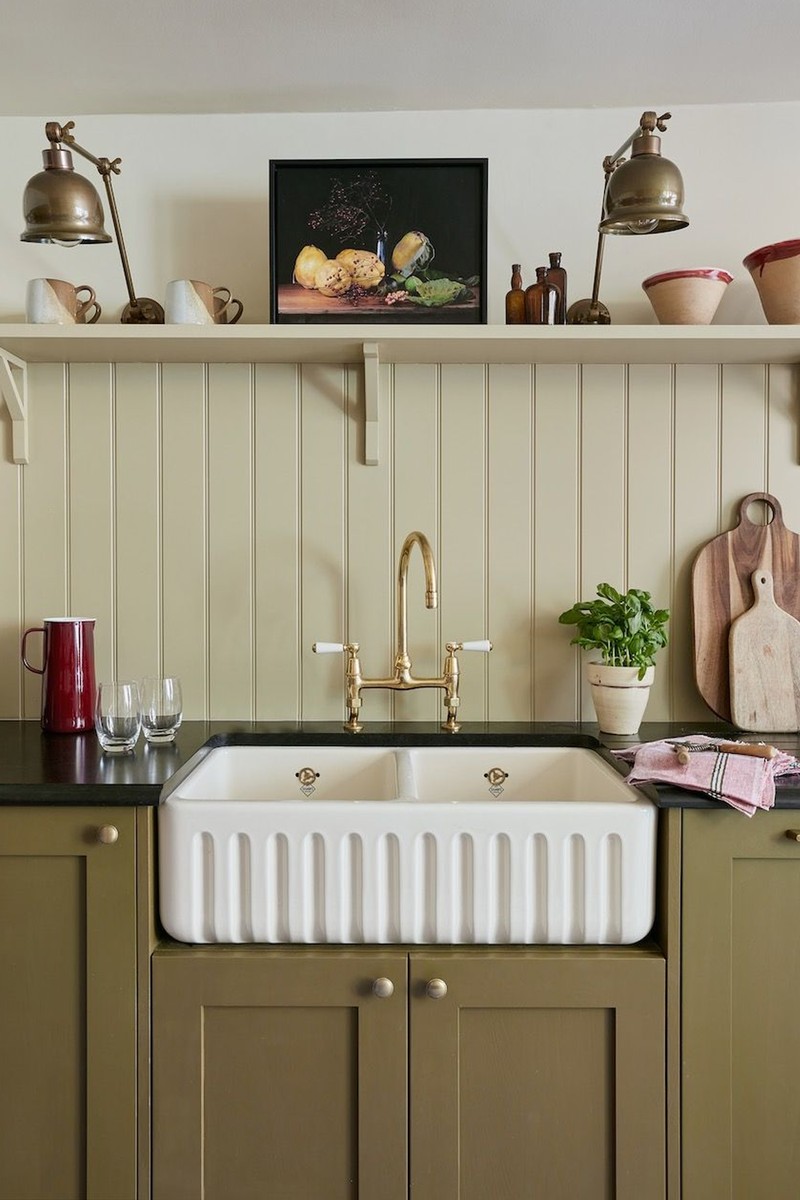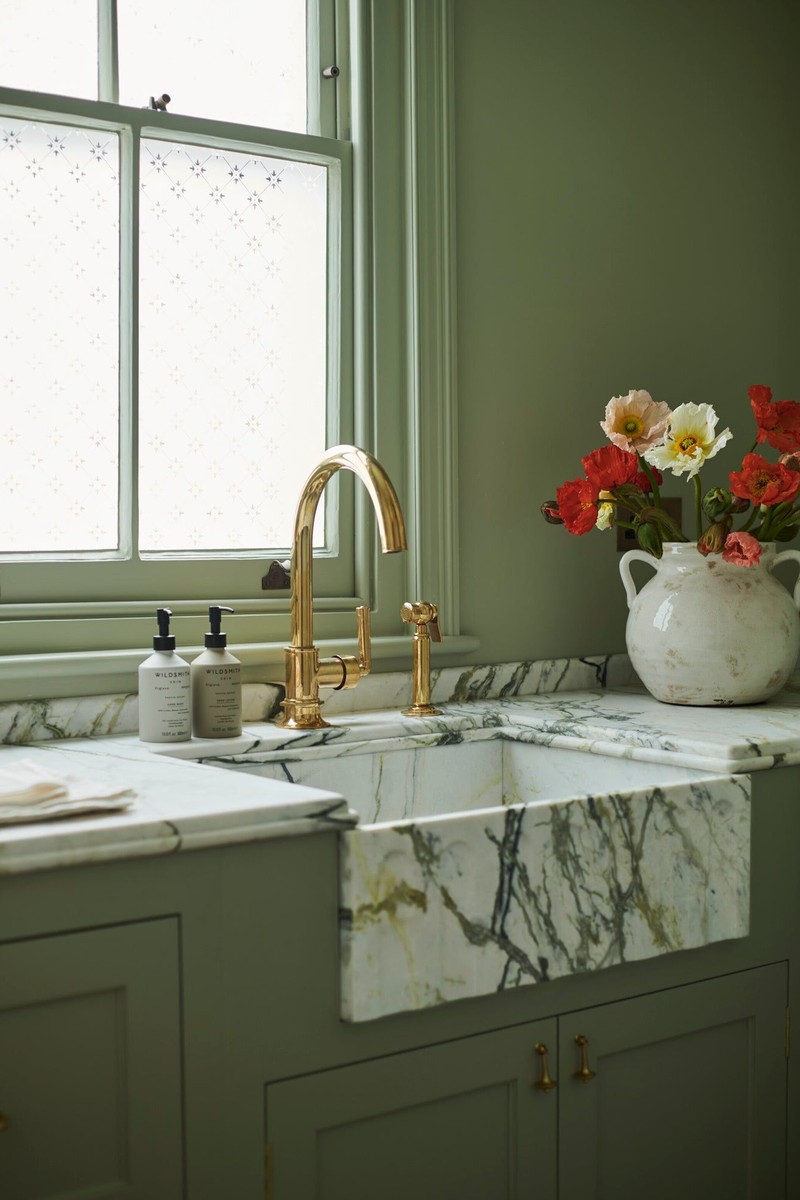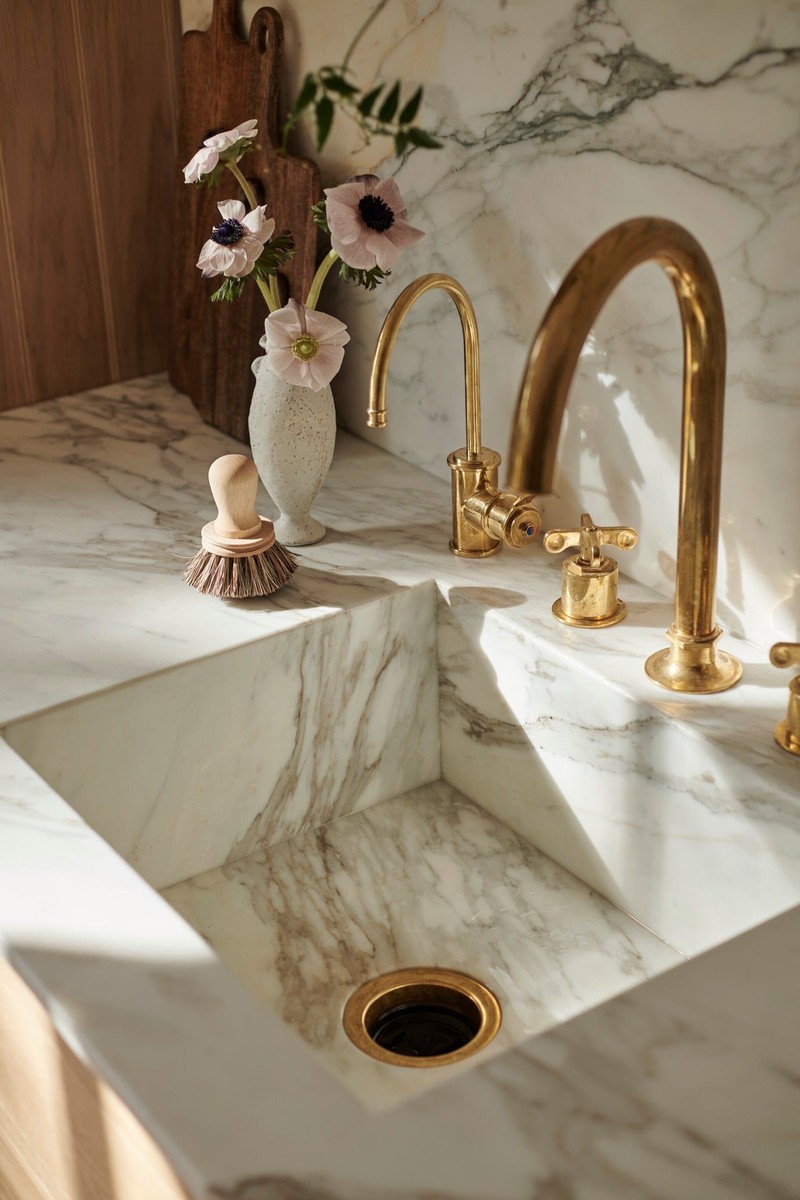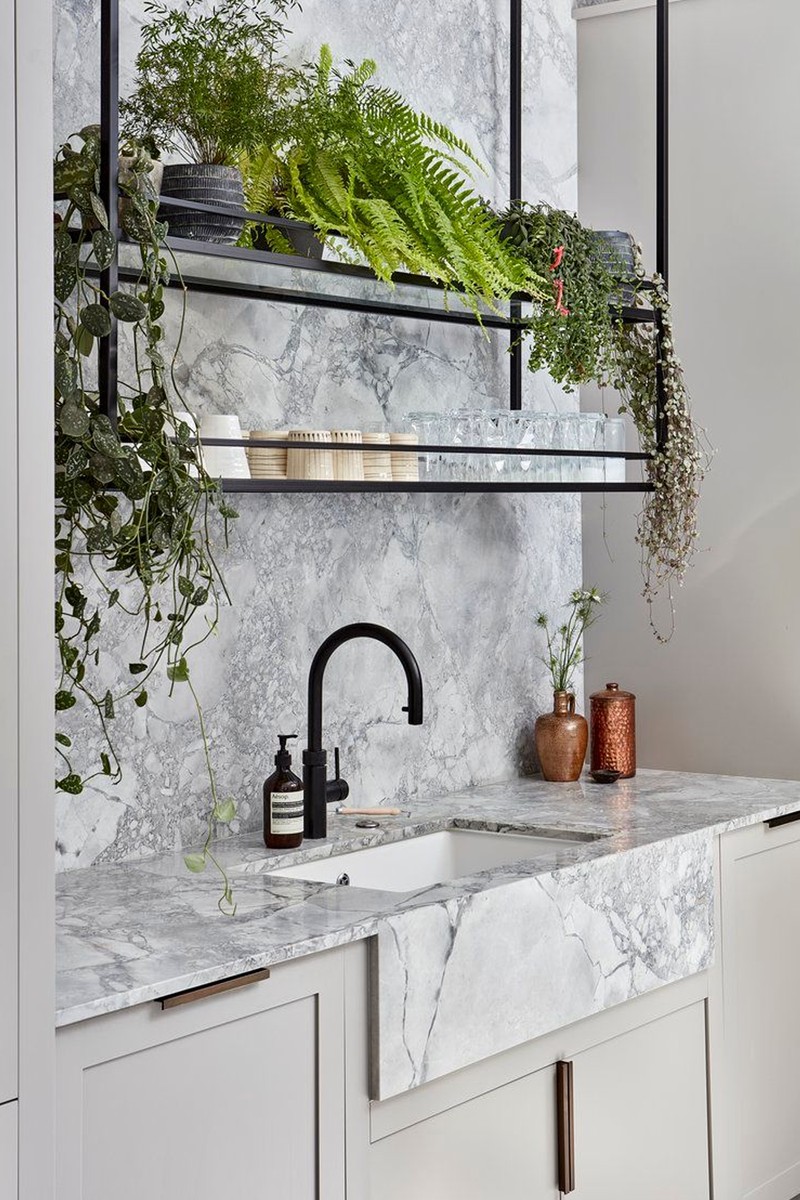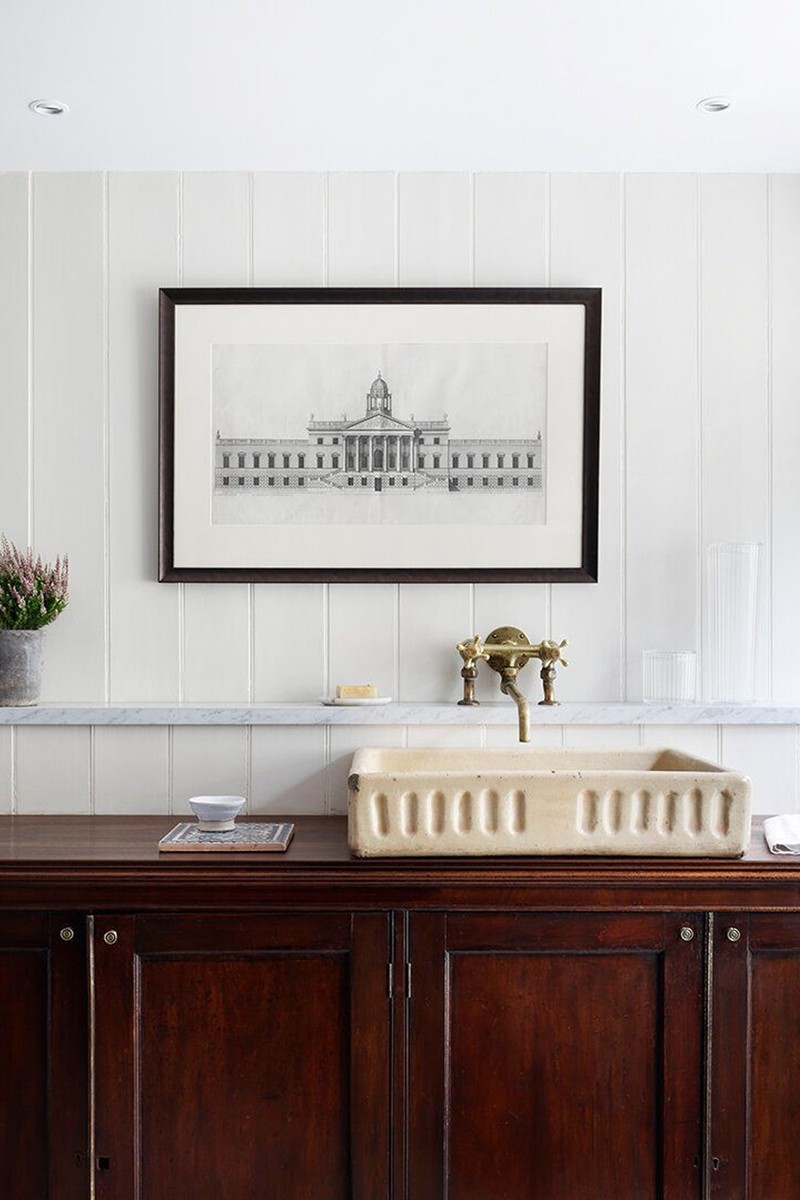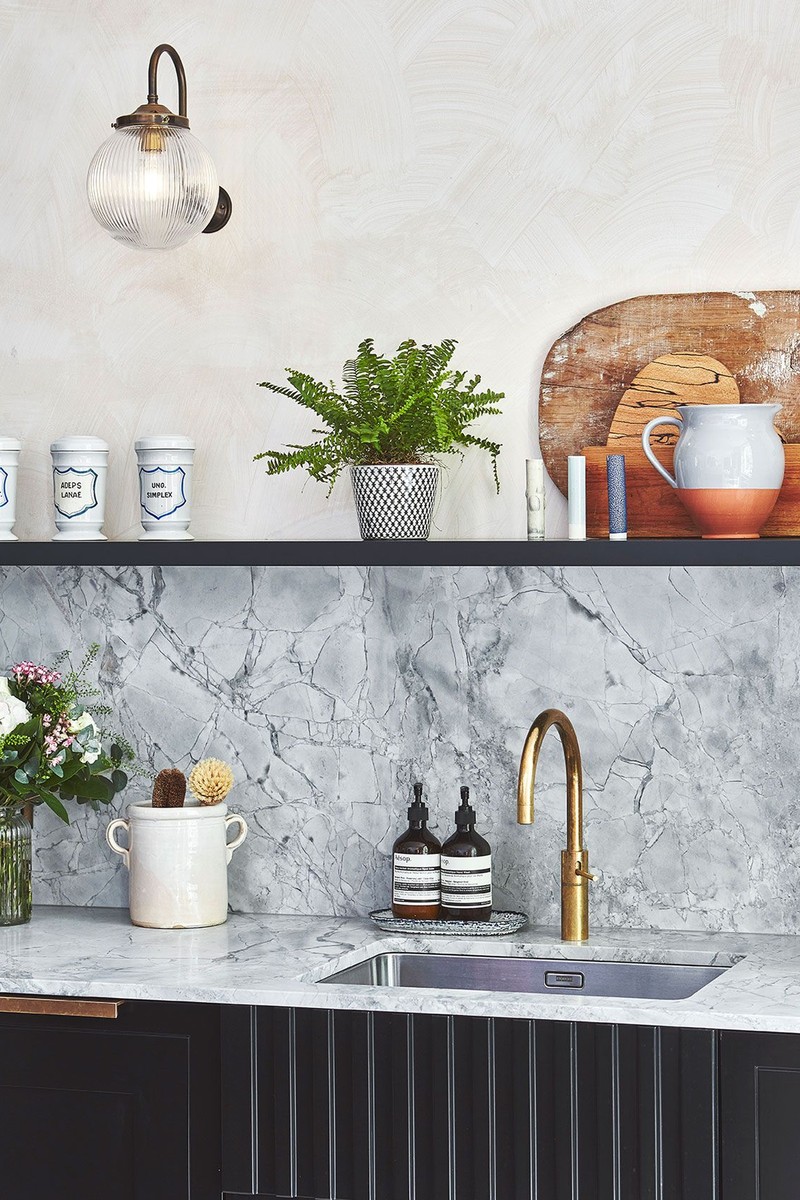How To Choose The Right Kitchen Sink
Butler
“The butler sink was an original feature in many Victorian homes. They are wide to contain as much water as possible – originally, they didn’t have an overflow, especially back in the day when water was collected from wells. They have adapted to include an overflow but the design essentially remains the same. They work in classic kitchens but also ones with a square-edged worktop and a more contemporary feel overall. I love a classic round mixer tap with this sink and the aged brass finish from Perrin and Rowe is my favourite. Don’t forget about the waste basket in the sink – the metal finish should match your taps and these ones from Shaw's look great with a butler sink. Finally, if space allows, go for a double sink for maximum practicality.” – Laura Stephens, designer
Fluted
“This is a contemporary take on a butler sink. The design comes from similar, much shallower industrial sinks from the 1940s but it has since been cleverly adapted to suit contemporary tastes. What I love about this sink is that it works in both a contemporary and traditional kitchen but has an extra dimension to it which really adds character. In terms of fittings, you could go for either a fab industrial-style Quooker tap like this or more traditional apron taps would look great. Finally, think about how the worktop finishes. I love an ogee-edge worktop, which is ridged and works so well with the fluting.” – Laura
Marble
“Similar to a butler or farmhouse sink, this marble model adds character and style. Crafted from marble, with green toned veining that complements the sage green cabinetry and walls, classic designs such as this work best in country-style or traditional kitchens. Leaving the front exposed rather than concealed within the cabinetry is ideal if you want to show off the beautiful finish. Mixer taps are best for all sink styles, and Belfast sinks like this work better with traditional style taps in brass.” – Simon Temprell, interior design manager at Neptune
Waterfall
“The marble wrap detail on this sink works particularly well in creating a waterfall effect on the kitchen sink. The stone is book-matched so that the veining runs over the top of the worktop and down the side of the skirting detail for a particularly smart finish. This modern interpretation of a butler sink offers a cleaner, more contemporary aesthetic to the sink area, offering a sharp shadow detail around the sink as opposed to the traditional recess that you get on a classic butler sink.” – Dulcy de Ponte e Sousa, senior technical designer, Blakes London
Integrated
“Integrated sinks tend to be more modern and streamlined, so they tend to work best in a contemporary kitchen where they complement the rest of the space. Using marble for an integrated sink is a great way to create a timeless but still modern scheme. This integrated sink is made from the same marble – Calacatta Borghini – as the worksurfaces and splashback. It’s coated in an epoxy mesh fibreglass to protect the marble. Consider the size of your pans and dishes, as well as the quantity of washing up you might have to do on a day-to-day basis, and make sure the sink is big enough to suit your needs. If you want waste drainage for dirty water, we recommend a double bowl, which is also useful if you use your sink a lot and want to be able to do more than one task at once. For smaller kitchens where countertop space is limited, one larger sink might be preferable, allowing you more room to wash larger items. More contemporary integrated sinks work better with simple, uncomplicated taps in any finish that works with the kitchen hardware.” – Simon
Copper
“Opting for a gold or copper sink can add an unexpected touch of glamour to what is rarely the most elegant part of a kitchen. Known for their anti-bacterial and highly durable qualities, copper sinks are increasingly popular. For both hygienic and practical purposes, we recommend pairing two sinks together so dirty items can pile up and be rinsed in one sink, while the second sink can be used to finish off the cleaning. While we are firm advocates of using mixed metals and materials within a design, if you opt for a statement sink, it works well to tie the metal of the sink in with that of the tap for a more cohesive look.” – Dulcy
Stainless Steel
“Stainless steel sinks are the go-to option for most kitchens as they are well priced and incredibly hard wearing. A good-quality stainless steel option will be less likely to scratch or stain, won't rust and will need very little maintenance to stay looking it's best. Our preference is to keep a stainless-steel sink understated by undermounting it and running the worktop, ideally without drainage channels, all the way over the top of the sink creating a stone lip around it. This creates a more contemporary look. If you're wishing to incorporate this kind of sink into a more traditional kitchen, you might consider adding a skirt detail to the front panel of the cabinetry within which the sink sits. On a recent Shaker kitchen, we added a timber front panel to the sink with a moulded ribbed detail, creating a feature out of the sink area which gave the design a tougher look.” – Dulcy
Antique
"Antique sinks add character and style to a kitchen but to make an antique sink successful, you need to plan the fitting carefully. It's important to consider how you'll make it work in terms of the waste, too – sometimes you'll need to source an antique one to fit with the sink. Reclamation websites are good places to hunt for interesting styles and designs, but think beyond the kitchen, as a sink like this is particularly good for a utility area. If you have a large family with lots of pots to wash up, the low sides on antique sinks could be a problem, so think carefully about the location." – Laura
DISCLAIMER: We endeavour to always credit the correct original source of every image we use. If you think a credit may be incorrect, please contact us at info@sheerluxe.com.
